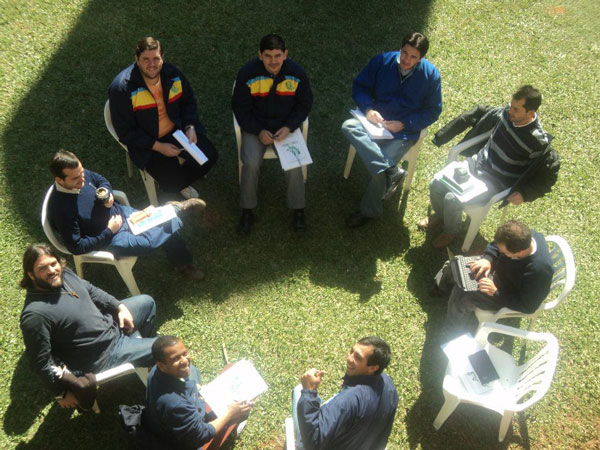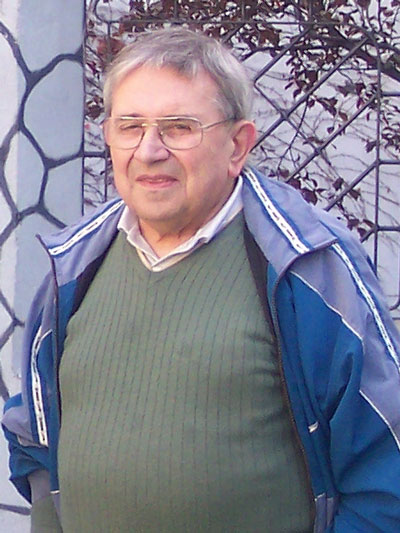Family News - 2012 October 14th
Contents
- A word from the Superior general
- Saint Michael Garicoïts wrote...
- Why not go?
- Felix peregrinatio througthout the betharramite Thailand
- 5 minutes with the Paulinia community - Brazil
- In memoriam: Fr José Maria Ruiz
- A History of the General Chapters of the Congregation of the Sacred Heart of Jesus of Betharram (9)
| formato PDF |
A word from the Superior general
FRATERNITY IN COMMUNITY
The object and aim of fraternity in community is to build up that union of hearts among individuals who are very different from every point of view. Such a union is possible only if based on faith in Jesus Christ, on consecration, spirituality and the mission. It is therefore a question of cultivating what makes us one: one Father, one Lord, one faith, one Baptism (Eph 4,1-7), one Word, one Eucharist, one charism, our founder Saint Michael Garicoits, one same patrimony, one glorious history, and even better, a future which we have to construct.From this point of view, the differences are not so much a problem as a challenge; we are invited to accept, in a spirit of poverty, what the other person has and I havent, and to share generously what I have and which the other person hasnt. Thats what makes community an ideal life style to practise the commandment of love for the others which we try to practise as brothers and children of the same Father.
This then is the experience of ecclesial communion, the treasure of the Church which she must share with the world today. It is true that the Church is a mystery of missionary communion. The Church is really the house and school of communion as Pope John Paul II used to say. And religious communities, at a time when the number of religious is waning, can still be such special places where the spirituality of communion is alive and put into practice. Here are some of the characteristics of this spirituality of communion, some of which have been drawn from Novo Milenio Ineunte No 43: contemplation of the Trinity as mystery of communion in the image of which we were created. Consequently we respect every human being living near us. We see in them a reflection of the brother with whom we are called upon to construct the unity, the same communion. This is why our brothers in faith are not indifferent to us and we are responsible for each of them by embracing their joys and their sorrows. This is also why we consider each brother as a gift from God and that what is best in him we consider to be a gift from the Lord to us through him. This urges us to become bearers of our brother with all that constitutes his life, and to accept him as a positive value without which I would not be any better.
This makes us avoid anything which could go against our brother coming from our heart: rivalry, ambition, suspicion, jealousy (Rule of Life 96). The spirituality of communion even includes forgiveness, and renounces the revenge coming from the depths of our being when someone harms us. Since we can consider ourselves victims or executioners we must practise mutual forgiveness if life is not to become hell (Rule of Life 104). In days gone by we used to practise this by observing the rules of the community. It was something easy in bigger communities. But today it is impossible to practise such values if there is no mutual respect and if an agreement hasnt been reached among the small number of the community.
Such unanimity can be checked in the community project since all the religious took part in its composition; thats how the concrete method of observing the Rule, the orientations of the universal and local Church are decided upon. In this way the community project becomes a means of outdoing the individualism to which we are all prone and of adopting the necessary means of practising evangelical fraternity and of accomplishing our mission perfectly.
The Community Project should include all the little points as well as the bigger ones which go to construct fraternity. To begin with the Superior of the Community must, as far as possible, involve all the brothers, each according to his possibilities and talents. At the same time, it is good to state exactly what we want to live out and what we want to do: times for prayer, times for silence, moments of reflexion to deepen a theme, our meetings, sharing experiences of faith, mission and relaxation (Rule of Life 103), all of that can be realised by the adaptation of our life project with that of the community.
Today, a community without a community and apostolic project cannot become a fraternity; it will live scattered, incapable of overcoming individualism, not sharing with the brothers what is essential for a life of faith and finally incapable of living out the mission as a team.
Gaspar Fernández Pérez, SCJ
 Saint Michael Garicoïts wrote...
Saint Michael Garicoïts wrote...
Lets be generous with God and God will be generous with us. Giving generously and with an open heart but with the regret of giving so little, saying we are worthless servants. Thats what it means to be generous with God. Lets apply ourselves to this generosity in all our activities and sufferings, and God will help us each day to be more capable and better prepared to receive the spiritual gifts and powerful graces in greater abundance; on this point there can be no difficulty! And so, lets depend on God in so far as we are generous with him; and as long as we are generous with him, there can be no doubt about the grace and glory which have been promised us. (M 377)
TOWARDS THE 150th ANNIVERSARY
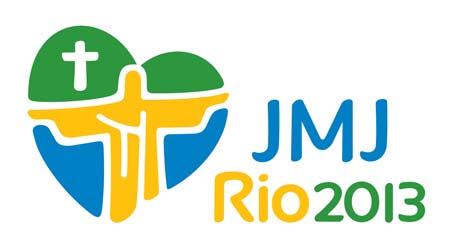
WHY NOT GO?
Even though the month of July 2013 seems a long way off, it is a good idea to start preparing now for the participation of the young Betharramites at the meeting at Passa Quatro and then at the World Youth Days (WYD) in Rio de Janeiro.
It is a project which must be launched and supported. So as to achieve this, methods must be found so as to enable as many young people as possible to be present; thought must be given to motivations and the content of the meeting so that it is a real journey of faith and that as a result of a meeting with Jesus Christ, it will become an unforgettable Church experience, in the footsteps of St Michael and following his example.
Here are some practical bits of advice for the participation of the young at this meeting for the 150 anniversary of the death of St Michael and the World Youth Days.
Each community (parishes, colleges, groups) has been asked to prepare the groups (the contents) making use of the material which will have been sent about the 150 anniversary of the death of St Michael (NEF) and on the suggestions coming from the different dioceses.
1. The two meetings: first of all the meeting of the young Betharramites who will be meeting to share what the image of St Michael means to them (on the occasion of his death); this meeting will take place at Passa Quatro from 19th 22nd July 2013. The second one for the World Youth Days will take place at Rio de Janeiro from 23rd 28th July 2013. All the young people from our communities must have arrived in San Paulo by 18th July at the latest. They can plan their return from 29th July in the afternoon.
Each group must appoint a responsible who will accept to inform Fr Graziano Sala SCJ (sala.graziano@betharram.it), or Fr Sebastian Garcia scj (sebastiangarciascj@gmail.com), the time and date of their arrival, the airline by which they will arrive in San Paulo (Brazil), in order to organise the transfer from the airport to Passa Quatro.
2. From 19th 22nd July the young people will be received by the Fr Auguste Etchecopar Region and especially by the Vicariate of Brazil at Passa Quatro. The Betharramite community is here in this town because of a college and because they are responsible for the parish. The young people will live in close contact with the cultural and social reality of the people; there will be times for meetings and sharing organised around the personality of St Michael, in this year when we are remembering the 150th anniversary of his death. The Superior General. Fr Gaspar Fernandez Perez, and the Regional Superior, Fr Gustavo Agin, will share this experience with the youth.
From 23rd to 28th July in the second part of the trip to Brazil they will participate in the WYD in Rio de Janeiro with the Holy Father, Benedict XVI and all the other young people from the whole wide world.
3. Further information on participation at this Congregational and Church event (cost, inscriptions) will be sent to Regional / Vicariate Superiors by an official letter from the Superior General, so that they can pass on the information to all the communities.
4. It is obvious that the local community is principal actor in the promotion of this experience. We pray that each religious will be aware of the responsibility which is his to pass on the information, to encourage the young and not abandon them to their own devices, but by accompanying them and finding within themselves the means and resources to make their participation possible.
The route is now open! Goodbye and see you soon in Brazil!
Graziano Sala, SCJ
Note from the General Council: Next Congregation Meetings
Council of the Congregation . From January 21 to 27, 2013: The Superior General, the General Council and the Regional Superiors.
The Formation Team . From January 28 to 31, 2013: Frs. Laurent Bacho, Sylvain Dansou Hounkpatin, Guido García, Chan Kunu, Gianluca Limonta, Jacky Moura ; Fr Simone Panzeri and Fr Stervin Selvadass have also been invited to take part in this meeting.
Team for the Recyclage Session in 2015 . From February 1st to 6th 2013: Frs Jacky Moura, Gustavo Agin, Andrew Ferris, Gianluca Limonta and Graziano Sala.
LIFE OF THE CONGREGATION
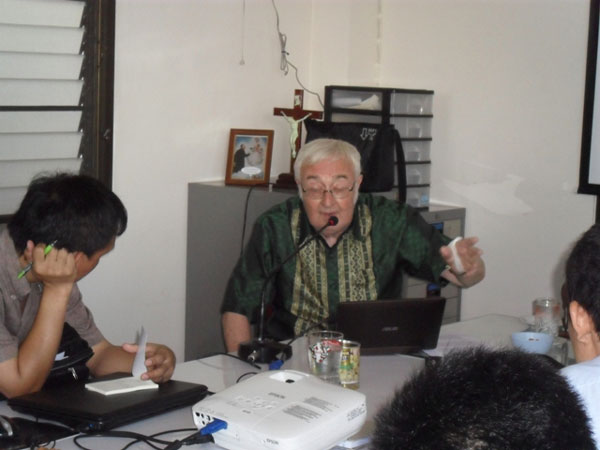
FELIX PEREGRINATIO THROUGHOUT THE BETHARRAMITE THAILAND
In a recent visit to Thailand Fr. Dominic Innamorati was welcomed into the formation house of Sampran. With the young people in formation, he shared a reflection on Saint Michael and on vocation history of each one.
At the new seminary in Sampran of Ban Garicoits I met 17 hard working and dedicated students under the direction of Fr Jirapat and visited the former house of Bam Betharram now a Junior Seminary of about 30 students under the direction of Fathers Subancha and Hiran. Instead of living and studying at St Josephs, they now cycle there just for classes.
From Chieng Mai I experienced some of the life and work in our parishes and missions. At Phayao there are about 20 junior candidates preparing to go to the Minor Seminary in Bangkok looked after by Fr Viravit who is on his own, but helped by the Sister Missionaries of the Sacred Hearts of Jesus and Mary, co-founded by Fr Paillas, a former General. Travelling further North there is at Ban Pong, a most impressive work begun and run by Fr Pensa, the Holy Family Centre which provides education and training in tailoring skills such as dressmaking and embroidering etc for girls and young women. Amid the beautiful mountains, fruit and teak plantations, one can see the workshops, assembly hall, classrooms, dormitories, and priests house amid the lawns and flowers surrounded by rich vegetation; there one feels a sense of peace and industry. One soon notices the caring and family atmosphere, and the pride of the 200 girls from the Ahka tribe not only from Thailand but even Burma or Myanmar in being part of this welcoming Centre.
On the feast of the Assumption I arrived at Mephon founded about 50 years ago by the venerated Fr Seguinotte as the first training centre for catechists in Thailand. My arrival for the Patronal feast of the Assumption saw hundreds Karens in tribal dress with priests , sisters and students processing through the trees and beside the streams to the Church for Mass. Fr Suthon asked me to present the first communion certificates. Many of our priests and orders of Sisters had come to celebrate this joyful and prayerful Mass which concluded with a feast of Thai food for all amid the gardens and trees.
To experience life in a mountain mission I was driven to Huay Tong where I was welcomed by Fathers Chayot and Chokde. Two things surprised me; the altitude of the Parish and the hard work of priests and Sisters who have to visit numerous settlements in the forests and mountains inaccessible except by narrow and steep tracks through gushing streams. The main mission had an elementary school where we chatted to the teachers all known to Fr Chayot. Walking round the village he stopped at some wooden houses and introduced me to many friendly villagers. Travelling considerable distances was not confined to this Parish but to all others under the care of our Fathers. One cannot but admire the zeal of the first missionaries over 50 years ago who covered vast distances on foot or by horse. Before climbing to Huay Tong we called at the town of Chomtong where Fr Ponchoi and a Brother looked after the Parish, the farm and about 12 teenage boys with the Mephon Sisters whom I found weaving cloth and who looked after the same number of girls. I noticed a Thai boxing ring between the buildings. In the lovely Church is a newly made statue of St Michael Garicoits as a young priest in bronze; the best I have seen.
I suppose I was fortunate in being in Thailand for the Queens birthday which is also mothers day. So I saw mothers feted in their families and prayed for in the Seminary. It was a most interesting experience living in the Seminary at Sampram and witnessing the devotion, prayer and hospitality.
I was asked to speak about St Michael as seen through his correspondence on two occasions which I was delighted to do and to witness the sharing, faith and commitment of these young men. As Fr Tidkam said they are our future.
When I left I had a traditional farewell with speeches by the one of the Brothers and the Superior and a presentation of flowers. I saw the all-embracing love of the Sacred Heart in so many aspects of the dedicated mission of both priests and brother students in their eagerness to go forth into the future where Vietnam, Burma and China beckoned. Ecce Venio!
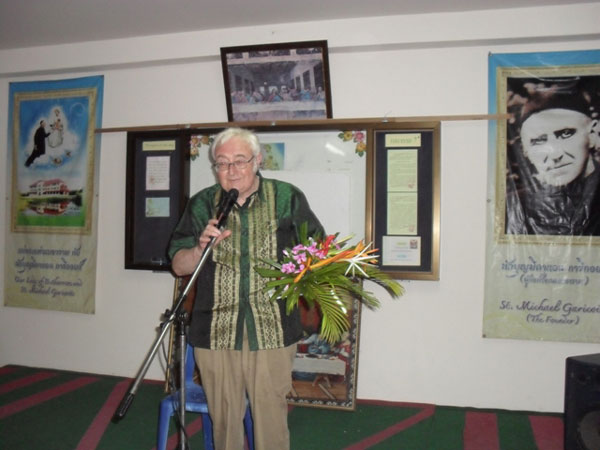
5 min with...
... the community of Paulinia, Brazil
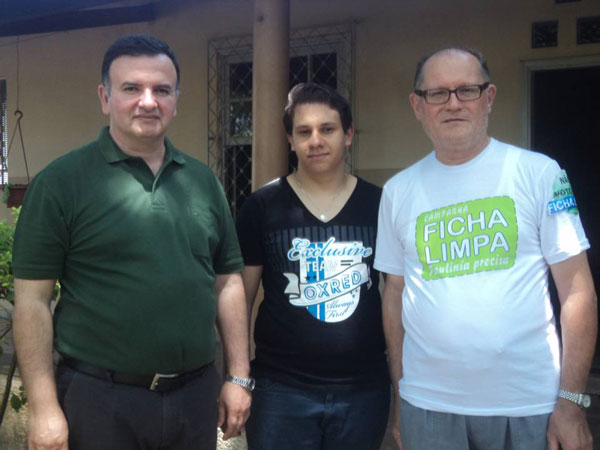
In this issue we continue the presentation of the different communities of the Congregation. It is now the turn of the communities of Paulinia and Vila Matilde in São Paulo: since last April they form one community. The religious were ready to answer our challenging questions and they came up with answers not turned towards the past but showing their courage to face the future
Nef: How did Betharram come to be in Paulinia?
- The wind blows wherever it pleases; you hear its sound, but you cannot tell where it comes from or where it is going. (John 3, 8). It was during one of those movements of the Spirit that the General Council, during its meeting in January 1983, named as Vice-Provincial for a second mandate Fr Joseph Mirande. At the same time the novitiate community was installed in Paulinia. The first Betharramite religious to arrive in Paulinia was Fr Paulo Vital, with the seminarians Helio and Paulinho. On 22nd January 1983 they rented a house in the town centre. Those early years were hard. But the local population, the parish priest of the Sacred Heart Parish and the Daughters of the Cross were very generous and helped us a great deal. Some time later the town council gave us a present of a piece of land in the quarter called flambloyant where the seminary was built. Eventually the Parish of Our Lady of the Beautiful Branch was constructed at the same time as the Parish Hall and in 1992 came the construction of the church. That briefly is the story of Betharram at Paulinia.
Formation was therefore at the origin of that foundation?
- Right from the start the Vice-Province wanted to open a novitiate. It was obvious that situated near such an important town as was Campinas, Paulinia was a special spot for formation and it is still that today. Later on, with the opening of the Parish of Our Lady of the Beautiful Branch, our field of activity grew.
Paulinia is a modern town with all its vices and virtues?
- Of course it is a modern town seeing that it is only 45 years old. Already it has a population of 90 000 and continues to grow; new quarters are developing here and there, as well as residential quarters which are very characteristic of our town. It is a town where you will find the poor, the rich and the wealthy. Here you have Petrobras (the largest oil refinery in Brazil) and several other petro-chemical industries. Drug and alcohol related problems which destroy lives and families are to be found in the suburbs!
The Parish of Our Lady of the Beautiful Branch is recent too?
- Yes it is. It was opened in the Archdiocese of Campinas in 2001. There are six communities of which the principal church is Our Lady of the Beautiful Branch. It is a city parish marked by many religions and consumerism which is typical of people living in mixed towns. It is sunk in the reality of people employed by Petrobras and the petro-chemical industries and in the reality of drug trafficking but also in family situations and the youth.
How can a community spirit overcome the division of the parish?
- We try to make our parishioners understand that the parish is the community of communities according to Church teaching and according to the Pastoral Project for the Church in Brazil. Consequently, the faithful with their leaders and the Pastoral superiors in each community know that they are working not only for their own community but also for the entire parish. This is being clearly understood here in Brazil, thanks to the contributions and reflexions from the documents from Aparecida.
Yours is a very large parish; are you not afraid of being scattered?
- That cannot easily happen; we always meet for meals, for coffee breaks, for moments of relaxation or to watch TV and, of course, at prayer times. We exchange a lot on our religious life, on our experiences as well as on our Pastoral activities. We dont feel that we are scattered!
Do you get much support from the lay people?
-Thank God, the laity here is well organised, united and available. Religious services are well attended. By nature and by mentality the Brazilian people are very religious. The laity helps us greatly in our mission and ministry. They are a constant and lively presence in the life of the parish.
Recently you hosted a meeting of Betharramite laity from the entire Vicariate!
- Yes, we did! But all the religious of the Vicariate collaborated in this meeting! Some of them directly by suggesting topics or by organising the meeting; others indirectly by their prayers or by making sure that the laity from their community were able to attend. We are sure that it was a grace-filled moment and we think that this is how all our Brethren saw it.
In 2013 Brazil is going to host the World Youth Days; what does this mean for the youth of this country?
- In Brazil the whole Church is aware of the importance of the WYD. It is going to be a golden opportunity of being aware that the presence of the youth must be more meaningful, warmer and more committed in the Church and in society. Every Brazilian diocese is already launched in the event by greeting the Cross of the Young with the image of Our Lady by way of preparation for the occasion.
To be faithful to the graces of the WYD, the dioceses suggest meetings and vigils as a preparation in the parishes and especially for the youth. A weeks mission to precede the meeting with the Pope is being organised. The youth from abroad will be welcomed at this mission which will be based on three basic themes: prayer, solidarity and culture.
As a religious community are you involved in this project?
- Of course, we are! Our commitment goes in the direction of the initiatives taken by the archdiocese which has already organised the event. In the parish we have already started inviting the young and it is widely discussed in meetings of religious, in parish councils, and other groups.
At present you community is accompanying an aspirant. This is a big responsibility; does it demand greater efforts for Vocational Pastoral?
- The Vicariate of Brazil is actually undergoing an important reform. Until last year Paulinia was the formation house for aspirants of which Fr Paulo Vital was director. From next year in the new project for the Vicariate the aspirants will be housed in Passa Quatro.
Strictly speaking there is no formation house for aspirants this year. But we have an aspirant: Leonardo Ferreira, who for the moment is living with us. Our commitment to vocations consists in helping in his formation.
Since last April, Paulinia and Vila Matilde (at San Paulo) constitute a single community. How did you organise things so as to make sure of your community life?
- Actually we are focusing on our community life in Paulinia where we are three: Fr Aurelio Riva, Fr Gilberto Ortellado and Leonardo Ferreira, a aspirant. We have decided this year to live together in the seminary (last year a Father was living at the seminary with the aspirants, and those working in the parish were living in the parochial house.) For those of us living in Paulinia our community times are: Morning Prayer, meal times, meeting to share the Word of God and our life style. Once a month we all, of the whole community, meet at Vila Matlide or maybe here.
What are your plans for the near future?
- Our plan is precisely to have the right conditions for a proper religious community with Vila Matilde. We are at the beginning of something new: a community constituted of Fathers serving here at Paulinia and those at Vila Matilde (Fr Wagner, Fr Luiz Henrique, Brother Pedro and Br Victor Torales). We have decided to meet together at least once a month. Little by little we are building our community project and must remember, by the way, on-going formation and sending our accounts to the Vicariate. On this point we have great hopes! We ask the Lord to help us to construct a community which prays, is united, is renewing itself and is missionary, a community which is a sign of the Kingdom of God in the parishes in which we are present.
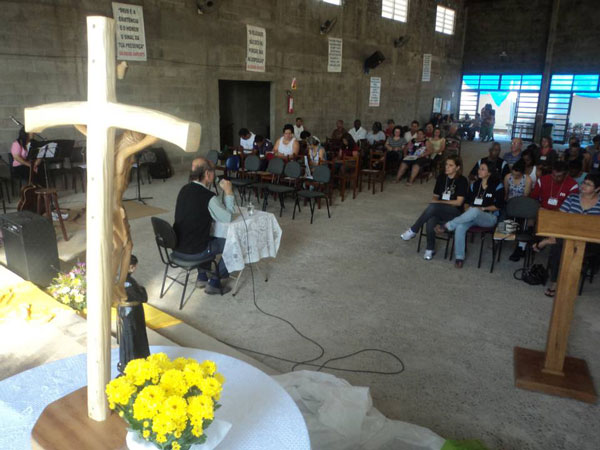
Fr José Maria Ruiz
Rivera, 7th July 1930 - Montevideo, 11th September 2012He was born 7th July 1930 in Rivera, a town north of Uruguay.
From the age of nine, in Montevideo, he accepted the invitation to be a Betharramite priest and religious.
His vocation matured at the Apostolicat at Barracas, in the Novitiate and Scholasticate at Adrogue. He was ordained priest in 1954, but in order to celebrate his first Mass at Montevideo he had to go via Asuncion for the frontier between Argentina and Uruguay was closed. The first years of his ministry were spent at the San Jose College in Buenos Aires, where he taught literature after his diplomas.
Soon afterwards he was named Director of the college of the Immaculate Conception, Montevideo, a post he held for five years. He was then appointed to be in charge of the Parish of the Basques.
He assured the same mission at Atlantida; he finished at Montevideo in 2008, the year in which sickness prevented him from assuming any other activity.
Giancarlo Monzani, scj
9. THE 1969 GENERAL CHAPTER
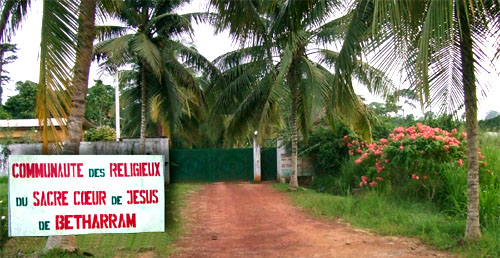
The implementation of Provinces in the organisation of Betharram was of capital importance and the results were decisive for the future development of the Institute itself. This was to put an end to the monolithic unity of the Congregation after 100 years of existence and to open the way for the decentralisation of the Congregation which had become necessary for better government. It also resulted in a definite plan for the promotion of vocations, so that in a few short years the number of religious had grown considerably; the spirit of St Michael was also taking shape in each of the cultural realities of the Congregation.
At the same time the renewal of the missionary spirit was plain for all to see; something in which the whole Congregation or one or other of the Provinces was actively engaged. After abandoning the mission to China with the expulsion of the missionaries in 1951, a new mission was opened at Chiang Mai in the north of Thailand. In 1959 the French Province launched the Betharramite mission to Ivory Coast, in reply to the urgent appeal from Pope Pius XII in Fidei Donum.
Sometime later in 1986 the Italian Province was opening a new mission at Niem in the Central African Republic. In Argentina there were missions in poor rural zones in the Argentinean hinterland or in Bolivia from the 1980s onwards. It is to be noted that if previously missions ad gentes were carried out by the Congregation it was now the new Provincial realities which brought home the message.
During the years following the creation of the provinces everything was now centred on the Vatican Council which had imposed on the Church and on each of its institutions a general revision of their identity and their activities. In the course of this renewal and in the light of the Council, each religious institute was required to renew its institutions and to update its Constitutions. The Motu Proprio Ecclesiae Sanctae dated 6 August 1966 set down the rules which were binding on the Religious Congregations: in order to promote the renewal specific to each Congregation a General Chapter was to be held within the next two, or at most, three years. In order to prepare this General Chapter the General Council carefully organised a consultation both wide ranging and free, of all the members of the Congregation. The results of this consultation were to be classified judiciously so as to be a help in directing the work of the forthcoming Chapter (Art 4). When he announced the opening of the Chapter, the Superior General, Fr Mirande, wrote in the NEF: It is meant to take the necessary steps for the updating of our Congregation according to the rules laid down by Vatican II. It is to be an updating not in seeking facility but truth, and a truth which must necessarily be demanding. It is meant to restore to our religious life its authenticity which can only produce the desired sign.
According to the rules laid down by Ecclesiae Sanctae the General Council drew up a plan which was both long and laborious:
At autumn 1966 a questionnaire on the chapters and contents of the Constitutions in use at that time was sent to all the religious of the Institute.
With the 250 replies (many of which were collective) and the 1 100 pages a synthesis of 44 pages was prepared and published in the NEF of September 1967.
In the light of the instructions from the grass roots, an inter-provincial commission met in July 1968 to prepare a rough sketch of the Constitutions which would be used as a working paper for the Provincial Chapters and Assemblies to be summoned for the preparation of the General Chapter. This rough sketch 94 pages long appeared in the NEF.
Finally, in the months leading up to the General Chapter, the conclusions reached in the provincial Chapters and Assemblies were put together to form a unique text which was given to each capitulante Father.
The General Chapter of 1969 is the longest in the history of Betharram. It opened on 7th July and finished its working sessions on the 11th August following. It then named the new Superior General Fr Giovanni Trameri and proceeded with the final drafting of the new Betharramite Constitutions; these were promulgated ad experimentum for a period of 12 years, until their final approval by the Holy See on March 25th 1983. At this point in time, the Superior General, Fr Grech wrote: The new Rule of Life says faithfully what we are, what we are meant to be in the Church and at its service. This text needs to be prayed and must become part of our life so that we may bear witness to what keeps us faithful because of our love of Christ.
Roberto Cornara
Document Actions






